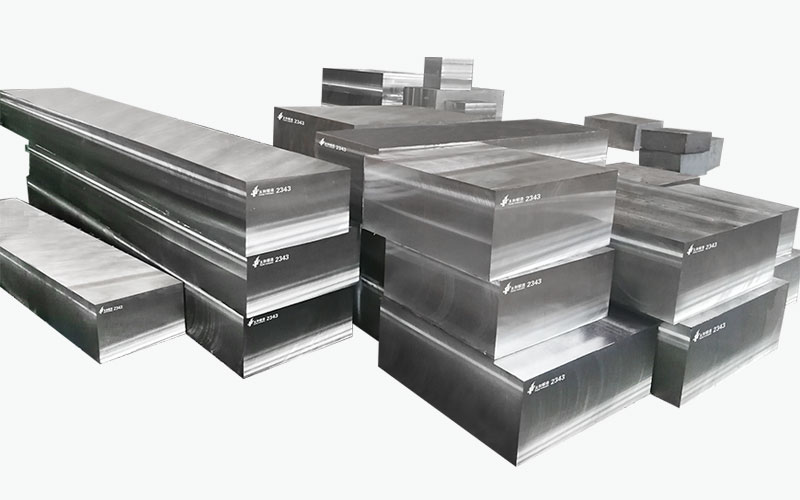Industry Park of Shangkeng
Sanmen ,Taizhou ,Zhejiang ,China
The composition of hot work die steel is similar to all […]
The composition of hot work die steel is similar to alloy quenched and tempered steel. The mass fraction of carbon is generally less than 0.5%, and contains Cr, Mn, Ni, Si and other alloying elements. According to the working temperature, performance and use, hot work die steel can be divided into the following categories:
General hot work die steel: low alloy hot work die steel represented by 55NiCrMoV6; medium alloy hot work die steel represented by H13; 3Cr3Mo3VSi tungsten molybdenum hot work die steel.
High-hardenability steel for extra-large forging modules: good hardenability, and the larger size of the mold core can obtain uniform performance.
High heat strength die steel can be divided into the following four categories.

a. Medium alloy high heat strength die steel: generally, W, Mo, Co, Nb and other elements are added on the basis of 3Cr3Mo3SiV (H10) and 4CrSMoSiV1 steel to improve its high temperature performance, such as the American ASTM standard steel number H10A, developed in China 3Cr3Mo3W2V and so on.
b. Precipitation hardening hot work die steel: This kind of steel has a low carbon content, generally around 2%. Contains some precipitation-hardening alloy elements such as V, Vb, Ni, Al, Mo, etc. After quenching, the die steel is tempered at a lower temperature (about 400 ° C), and the hardness is about 40HRC. Due to the low carbon content, the medium temperature returns The structure after the fire is lath low-carbon martensite, which has good toughness and machinability and can be used for cavity processing.
c. Low-carbon high-speed steel and base steel: High-speed tool steel has good tempering softening resistance and high temperature hardness, but its toughness and cold and hot fatigue resistance are poor. Low-carbon high-speed steel is to reduce the carbon content of high-speed steel from about 1% to 0.3% to 0.6%, and improve the toughness and resistance to cold and hot fatigue at the expense of some red hardness and wear resistance. d. Austenitic hot-work die steel: after solid solution aging treatment, these steels still maintain good strength at 700 ~ 800 ℃, such as 5Mn18Cr10V2 of Hitachi Metals Corporation of Japan, 7Mn10Cr8Ni10Mo3V2 of China.
Other hot work die steelsIn order to improve the performance of die steel for hot punching, hot rolling, hot forging and small and medium mechanical presses, to replace the currently used 5CrNiMo, 5CrMnMo, 3Cr2W8V steel grades, many domestic Studies, such as 35Cr3Mo3W2V (HM1), 3Cr3Mo3VNb (HM3), 4Cr3MoW4VNb (GR), etc., developed in the 1970s, have improved in thermal stability and thermal fatigue resistance.
In addition, 5Cr4W2Mo2SiV, 5Cr4Mo6Ni2WV, 7W4Cr2MoNiV, 5Cr4W5MoV and other steel grades have been developed in China for hot precision forging or hot extrusion die, and the effect is also good. The high-heat high-strength toughness steels developed in the 1980s, 28Cr2NiMoWVSi, 6Cr2Mn2SiMoV, 65W8Cr4VTi (LM1), 65Cr5Mo3W2VSiTi (LM2), 4Cr2Mo2WV (TM), 4Cr3Mo2NiVNb (HD), of which, TM, HD steel is used to replace 3Cr2W8V.
In order to improve the thermal strength of large-section machine forging dies and hammer forging dies, the steel grades developed in recent years are 5Cr2NiMoVSi, 45Cr2NiMoVSi, 55NiCrMoV, ER8, 3Cr2MoWVNi, 4Cr2MoVNi.